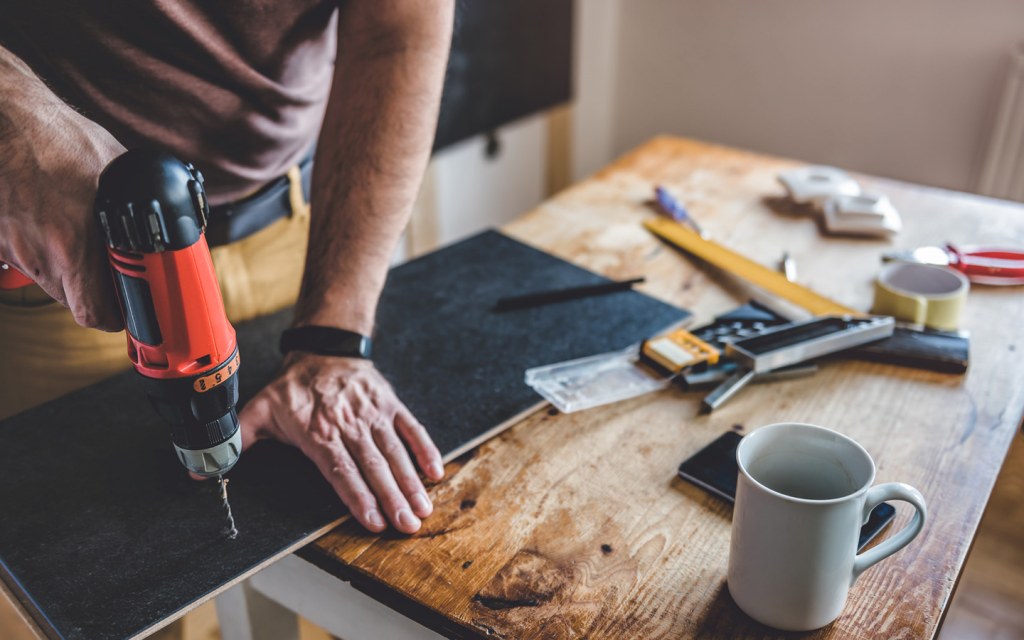Nobody can deny that “do-it-yourself” projects are a great way to save some money, especially when the internet has reduced several complexities in gaining knowledge. With billions and billions of pages of information available freely on the internet, you can be sure that there’s an instructional blog on your DIY project, listing everything that needs to be done. However, at times, the end product doesn’t look like the one you’ve pinned from someone’s board on Pinterest. Why does it happen? We are here with yet another set of useful tips for DIY home improvement projects that you can use to solve this conundrum and save yourself some effort, time, and money.
Let’s begin!
Ingenious Tips for DIY Home Improvement Projects
A recent survey found that over 200 million people in the world visit Pinterest every month looking for DIY ideas. Hence, there’s a reason why “Pinterest Fail” has become a norm to describe projects that do not look like the original ideas. So, even if the internet makes a project look low-cost and easy to attempt, that doesn’t always mean it is.
The question, however, remains, “When you should think twice before starting a DIY home improvement project?” Well, if you’re considering any DIY project, make sure you go through our set of tips for DIY home improvement projects first:
- You Can’t Replicate the Quality of a Ready-Made Product
- DIY Material & Equipment is Costlier than Store-Bought
- Managing Time and Efforts Will Become Stressful
- You are Not Quite Confident About It
You Can’t Replicate the Quality of a Ready-Made Product

Let’s be real about one thing; no matter what the internet tells you, the truth is that not every DIY project is always as low-cost and easy as the instructional videos make you believe. Sometimes, these projects require tools and equipment that aren’t even remotely available in your area or home. Besides, some projects will also require technical work that’s best left to professionals.
The first-most easy way to identify whether a project is worthy of your efforts or not is to realise and be sure about whether you can replicate the quality of a ready-made item. A great example in this regard would be easy-to-build furniture such as tables, especially coffee, dining, and side tables. You can easily build one with a few simple steps – it only requires cutting a top and adding a support frame with legs. A homemade table piece can easily cost you around PKR 3,000-PKR 5,000, while the cost of a simple store-bought table starts at PKR 8,000, on average.
There’s no doubt that you are saving money, but not everything homemade is of a higher quality; sometimes, the store version is a better deal.
Another great example in this regard is homemade cleaning products and detergents, which are not as effective as anything you get from the local store. So, technically, it doesn’t make sense even though you are saving money, you will end up spending double.
In a nutshell, it is better to spend on a store-bought item if the DIY project is doing you no good or isn’t worthy enough for you to brag about.
DIY Material & Equipment is Costlier than Store-Bought

The most important thing to consider in any DIY project, hands-down, is its cost. If you’re considering a DIY project that requires material or tools you don’t already have, you must factor the cost of tools in the overall cost of the product. Let’s say if you want to build a table that costs around PKR 3,000, as mentioned in the instructional video, but you do not have the tools available that are needed to assemble it, such as a drill, a circular saw, a woodcutter, and other tools. Not to mention, the cost of gas you will have to burn to get these things – it would not come out as cheap in comparison with buying the same furniture online or from a physical store.
On a side note, if you need help with online shopping in Pakistan, check out our recently published guide to make sure you invest your money in the right brands and products.
Managing Time and Efforts Will Become Stressful

Time is money, literally! If you work a job that requires a good nine or ten hours of your time, then keep in mind that you will run low on energy for the DIY project. You cannot afford to lose your wages if your seemingly easy home improvement project demands time, and you are easily stressed. For instance, you’re being paid around PKR 500 per hour by your employer. So, every hour you spend on your DIY project represents PKR 500 in lost income. Needless to say, you could end up losing more than you have saved by attempting that particular DIY project.
Besides time, DIY projects demand a lot of energy that may drain you physically and mentally. These projects, at times, can quickly become a chore or a blemish on your seemingly endless to-do list. Hence, it isn’t worth it if you end up frustrated, and you do not feel good about achieving something on your own.
You are Not Quite Confident About It

No bones about it: hiring a professional saves you time and keeps you at peace. Sometimes, it also makes sense to take a little help from the professionals if you are not feeling confident about the project. This goes especially true for the projects that should not be attempted by someone who isn’t trained for the job. This can include any DIY home improvement project that requires an advanced skill you do not have, or you are not familiar with, yet.
Be extra careful when you take projects that could literally get you in trouble or lead to life-threatening situations. For example, if you are not familiar with electrical work and it goes wrong, you could be electrocuted or risk starting a fire.
Some of these projects also require a particular skill, such as plumbing or fixing a roof. If there’s even a slight mistake in these projects, you can end up destroying your home, which will undoubtedly hurt you in the form of your home’s resale value.
These are the kind of DIY home improvement projects that you will be grateful to leave to a trained professional.
This brings us to the end of our blog. As long as you refer to our set of useful tips for DIY affordable home improvement projects, you will be able to draw a line between what’s do-able and what should be left to a professional. If you have any questions, write to us at blog@zameen.com. For more home décor tips, subscribe to Zameen Blog.
Keep visiting our Facebook page for more updates.



